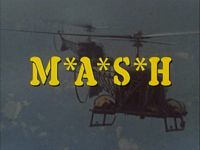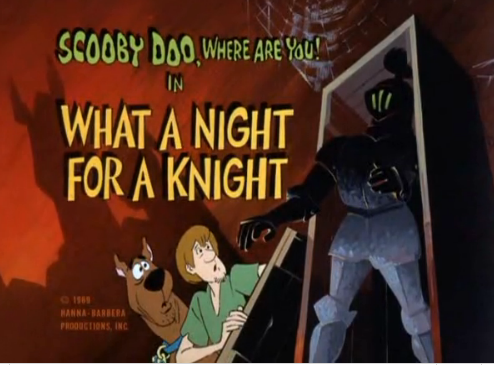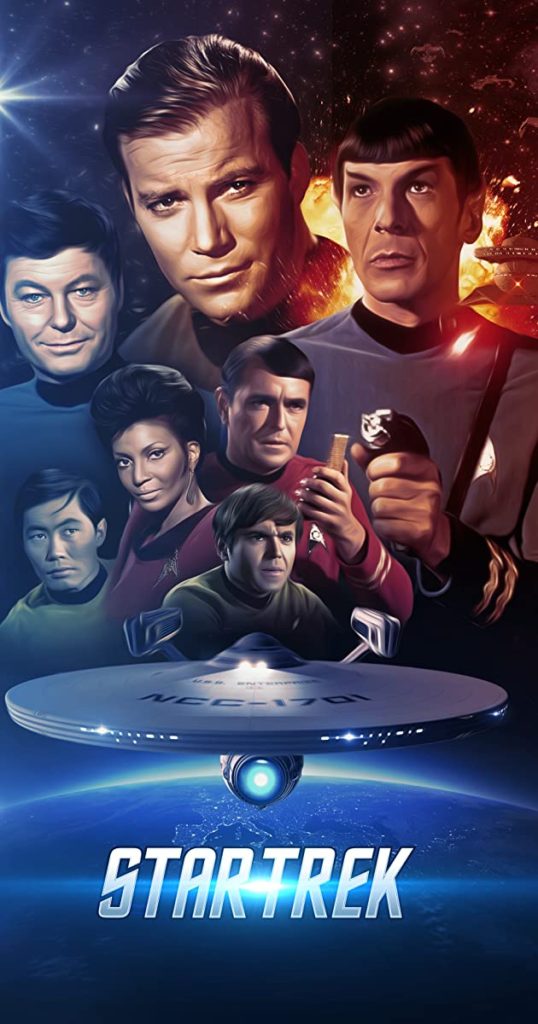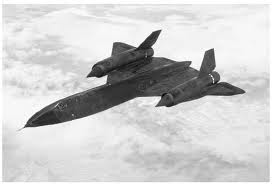
The series premiered on September 17, 1972, and ended February 28, 1983, with the finale becoming the most-watched television episode in U.S. television history.

The series premiered on September 17, 1972, and ended February 28, 1983, with the finale becoming the most-watched television episode in U.S. television history.
The first episode of Scooby-Doo, Where Are You! “What a Night for a Knight” debuted on the CBS network Saturday, September 13, 1969. The original voice cast featured veteran voice actor Don Messick as Scooby-Doo, radio DJ Casey Kasem (later host of radio’s syndicated American Top 40) as Shaggy, actor Frank Welker (later a veteran voice actor in his own right) as Fred, actress Nicole Jaffe as Velma, and musician Indira Stefanianna Christopherson as Daphne. Scooby’s speech patterns closely resembled an earlier cartoon dog, Astro from The Jetsons (1962–63), also voiced by Messick.

Today, the hard drive is found everywhere–from the PCs we use daily to MP3 players and memory keys so small you can toss them in your pocket and forget you’re carrying around a hard drive. But when the hard drive was first introduced on September 13, 1956, it required a humongous housing and 50 24-inch platters to store 1/2400 as much data as can be fit on today’s largest capacity 1-inch hard drives.
Back then, the small team at IBM’s San Jose-based lab was seeking a way to replace tape with a storage mechanism that allowed for more-efficient random access to data. The question was, how to bring random-access storage to business computing?
Posted in Anniversary, Because I Can, On This Day
Please observe a moment of silence at 8:46 a.m. (1246 GMT) to mark the moment when American Airlines Flight 11 crashes into the North Tower of the World Trade Center, at 9:03 a.m. (1303 GMT) when United Airlines Flight 175 crashes into the South Tower of the World Trade Center, 9:37 (1337 GMT) when American Airlines Flight 77 crashes into the Pentagon, at 9:59 a.m. (1359 GMT) when the South Tower Collapses, at 10:03 (1403 GMT) when United Airlines Flight 93 crashes near Shanksville, Pennsylvania, and finally at 10:29 a.m. (1429 GMT) when the North Tower Collapses.
Posted in Anniversary, Because I Can, On This Day, Patriotic
Star Trek is an American media franchise originating from the 1960s science fiction television series Star Trek, created by Gene Roddenberry. That series, now often known as “The Original Series“, debuted on September 8, 1966, and aired for three seasons on NBC. It followed the voyages of the starship USS Enterprise, a space exploration vessel built by the United Federation of Planets in the 23rd century, on a mission “to explore strange new worlds, to seek out new life and new civilizations, to boldly go where no man has gone before”. In creating Star Trek, Roddenberry was inspired by C. S. Forester’s Horatio Hornblower series of novels, Jonathan Swift’s Gulliver’s Travels, and television westerns such as Wagon Train.


On September 7, 1813, the United States gets its nickname, Uncle Sam. The name is linked to Samuel Wilson, a meat packer from Troy, New York, who supplied barrels of beef to the United States Army during the War of 1812. Wilson (1766-1854) stamped the barrels with “U.S.” for United States, but soldiers began referring to the grub as “Uncle Sam’s.” The local newspaper picked up on the story and Uncle Sam eventually gained widespread acceptance as the nickname for the U.S. federal government.
In the late 1860s and 1870s, political cartoonist Thomas Nast (1840-1902) began popularizing the image of Uncle Sam. Nast continued to evolve the image, eventually giving Sam the white beard and stars-and-stripes suit that are associated with the character today. The German-born Nast was also credited with creating the modern image of Santa Claus as well as coming up with the donkey as a symbol for the Democratic Party and the elephant as a symbol for the Republicans. Nast also famously lampooned the corruption of New York City’s Tammany Hall in his editorial cartoons and was, in part, responsible for the downfall of Tammany leader William Tweed.
Perhaps the most famous image of Uncle Sam was created by artist James Montgomery Flagg (1877-1960). In Flagg’s version, Uncle Sam wears a tall top hat and blue jacket and is pointing straight ahead at the viewer. During World War I, this portrait of Sam with the words “I Want You For The U.S. Army” was used as a recruiting poster. The image, which became immensely popular, was first used on the cover of Leslie’s Weekly in July 1916 with the title “What Are You Doing for Preparedness?” The poster was widely distributed and has subsequently been re-used numerous times with different captions.
In September 1961, the U.S. Congress recognized Samuel Wilson as “the progenitor of America’s national symbol of Uncle Sam.” Wilson died at age 88 in 1854, and was buried next to his wife Betsey Mann in the Oakwood Cemetery in Troy, New York, the town that calls itself “The Home of Uncle Sam.”
Posted in Anniversary, Because I Can, On This Day, Patriotic
Posted in Anniversary, Because I Can, On This Day
Jimmy Buffett was an American singer-songwriter, musician, author, and businessman. He was best known for his music, which often portrays an “island escapism” lifestyle. Together with his Coral Reefer Band, Buffett recorded hit songs including “Margaritaville” (ranked 234th on the Recording Industry Association of America’s list of “Songs of the Century”) and “Come Monday”. He had a devoted base of fans known as “Parrotheads”.
Aside from his career in music, Buffett was also a bestselling author and was involved in two restaurant chains named after two of his best-known songs; he owned the Margaritaville Cafe restaurant chain and co-developed the now defunct Cheeseburger in Paradise restaurant chain.
Buffett was one of the world’s richest musicians, with a net worth of $1 billion by 2023.
Buffett died from lymphoma on September 1, 2023, at the age of 76. The singer’s death was announced on his social media pages and on his website. In a statement released by the family, they said “Jimmy passed away peacefully on the night of September 1st surrounded by his family, friends, music and dogs. He lived his life like a song till the very last breath and will be missed beyond measure by so many.”
Posted in Anniversary, Because I Can, Events, Music, News

The SR-71 holds the “Speed Over a Recognized Course” record for flying from New York to London distance 3,508 miles (5,646 km), 1,435.587 miles per hour (2,310.353 km/h), and an elapsed time of 1 hour 54 minutes and 56.4 seconds, set on September 1, 1974 while flown by U.S. Air Force Pilot Maj. James V. Sullivan and Maj. Noel F. Widdifield, reconnaissance systems officer (RSO). This equates to an average velocity of about Mach 2.68, including deceleration for in-flight refueling. Peak speeds during this flight were probably closer to the declassified top speed of Mach 3.2+. For comparison, the best commercial Concorde flight time was 2 hours 52 minutes, and the Boeing 747 averages 6 hours 15 minutes.
Posted in Anniversary, Because I Can, Planes Trains and Automobiles
Posted in Because I Can, Humor, The Little Screen (Television)

From Wikipedia:
The Wizard of Oz is a 1939 American musical fantasy film produced by Metro-Goldwyn-Mayer and distributed by Warner Bros. Family Entertainment. Widely considered to be one of the greatest films in cinema history, it is the best-known and most commercially successful adaptation of L. Frank Baum’s 1900 children’s book The Wonderful Wizard of Oz. Directed primarily by Victor Fleming (who left the production to take over the troubled Gone with the Wind), the film stars Judy Garland as Dorothy Gale alongside Ray Bolger, Jack Haley, and Bert Lahr.
Characterized by its legendary use of Technicolor (although not being the first to use it), fantasy storytelling, musical score, and memorable characters, the film has become an American pop culture icon. It was nominated for six Academy Awards, including Best Picture, but lost to Gone with the Wind, also directed by Fleming. It did win in two other categories: Best Original Song for “Over the Rainbow” and Best Original Score by Herbert Stothart. While the film was considered a critical success upon release in August 1939, it failed to make a profit for MGM until the 1949 re-release, earning only $3,017,000 on a $2,777,000 budget, not including promotional costs, which made it MGM’s most expensive production at that time.
The 1956 television broadcast premiere of the film on the CBS network reintroduced the film to the public; according to the Library of Congress, it is the most seen film in movie history. It was among the first 25 films that inaugurated the National Film Registry list in 1989. It is also one of the few films on UNESCO’s Memory of the World Register. The film is among the top ten in the BFI (British Film Institute) list of 50 films to be seen by the age of 14.
The Wizard of Oz is the source of many quotes referenced in contemporary popular culture. Noel Langley, Florence Ryerson, and Edgar Allan Woolf received credit for the screenplay, but others made uncredited contributions. The songs were written by Edgar “Yip” Harburg (lyrics) and Harold Arlen (music). The musical score and the incidental music were composed by Stothart.